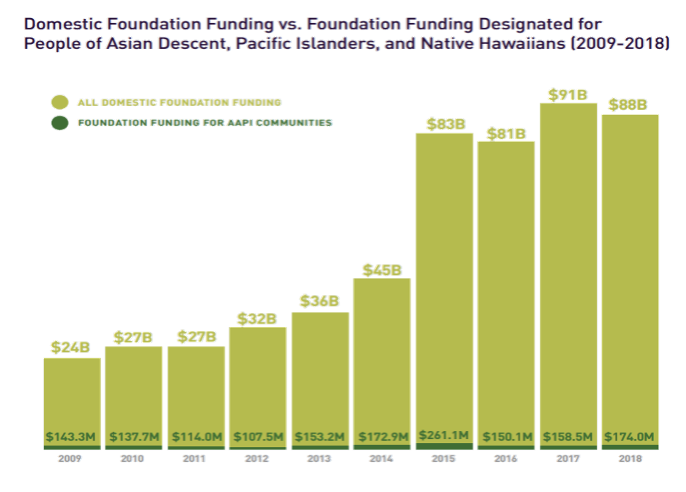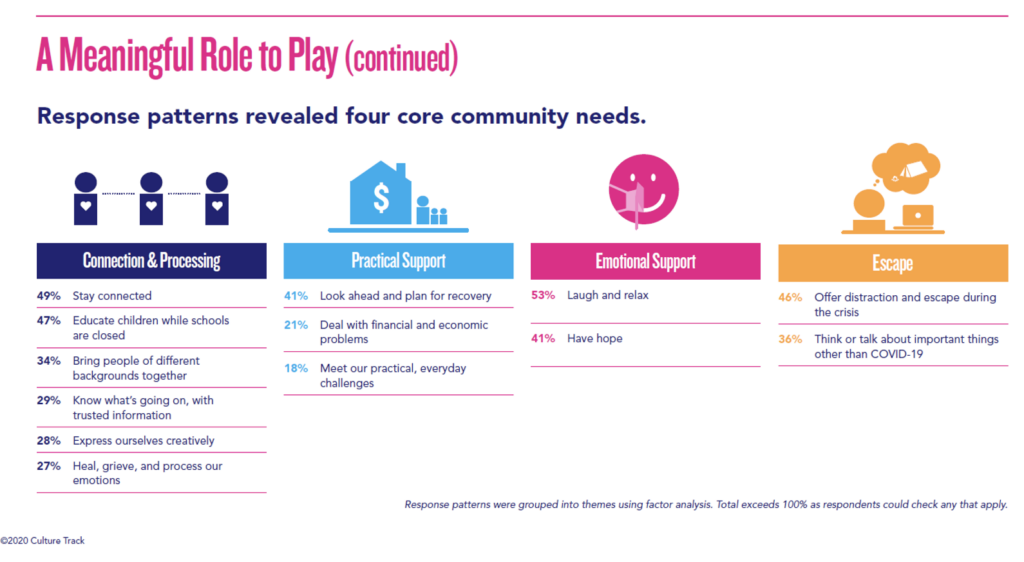CEP’s new report Persevering Through Crisis: The State of Nonprofits illuminates the profound impact of the pandemic on the nonprofit sector, and its exacerbation of existing inequities. Within the sector, arts organizations were hit especially hard. Here are five things foundation leaders should know about their challenges and possibilities for progress.
The pandemic hit arts organizations and staff hard
Cultural nonprofits experienced the possibility of zeroing out all revenue sources. Earned income comes mainly from ticket sales, contributed income in the form of gifts, the bulk of which came from individual donors whose giving often tracks with attendance and other revenue from rental income (event space, concessions) that was immediately cancelled. When the pandemic struck, the impact was severe.
The Johns Hopkins Center for Civil Society Studies Nonprofit Economic Data Project reported that the nonprofit arts, entertainment, and recreation sector lost more than one-third of its jobs between February and December 2020, and estimated recovery may take two years. A separate survey by the American Alliance of Museums found that 40 percent of the 2,700 people surveyed had lost income due to the pandemic, with the average losing 30 percent of their total income. Contractors and freelancers – ubiquitous in the arts – were especially affected. Many reported a loss of a sense of well-being; on a scale of 1-10 with 10 being a very strong negative impact, arts staff ranked themselves at 6.6, with arts students soaring to an overall 8.
It’s clear that after the past year in which many took on multiple jobs, staff in arts organizations are cautiously optimistic, but understandably exhausted.
Government and foundations helped – but the outlook remains uncertain
Foundations are often accused of not playing well together, but in this moment of crises, arts funders nationwide joined forces in efforts like The Artists Relief Fund, supplementing the federal Paycheck Protection Program and the Shuttered Venue Operators Grant program.
Wallace’s emergency grants went to artists, arts organizations, and arts service organizations, whose role in providing information to individual arts organizations, serving as a field voice, and connecting members is often under-appreciated.
The pandemic also sparked funders to share information, including through a peer funders group I co-chair. We recently checked in with each other to ask ourselves: “A year after the pandemic, what do we change, hospice, or hold onto?” I want these connections to last, and for us to hold onto pushing ourselves to be nimble, adaptable, and open to address other challenges that aren’t as urgently severe as a global pandemic, but still very real – such as systemic undercapitalization for the arts and culture field, particularly for communities of color.

These efforts made a difference. A field scan of nearly 300 organizations by the arts consulting firm TDC found that in fiscal years 2020 and 2021, most organizations balanced their budgets through government support, contributed revenue, and expense cuts, and that many cited “the positive impact of unrestricted dollars and decreased reporting requirements.” But the same survey reported that “anxiety remains about 2022 and 2023 because of the one-time nature of revenue over the past year and unanswered questions about the future.”
New funding from foundations may not have been spread equitably
These worries appear to be particularly strong for BIPOC organizations who feel, according to the same TDC survey, “chronically underfunded,” something we have heard repeatedly from arts leaders of color, whose budgets are also likely to be smaller. This is consistent with CEP’s grantee panel reporting less support from foundations if they served communities of color.
This raises the question of whether organized philanthropy has fully responded to demographic changes. For example, Asian Americans/Pacific Islanders in Philanthropy (AAPIP) reported that over 10 years, funding focused on AAPI communities held steady at 0.2 percent of grants, despite the fact that Asian Americans are the fastest growing racial or ethnic group in the U.S., with the population increasing 81 percent from 8.4 million in 2000 to nearly 19 million in 2019.

Arts organizations are seen as vital to communities
As foundations consider how to support communities battered by the pandemic, emerging evidence suggests people see arts organizations as potentially important resources. A special edition of Culture Track, a large, national study with a demographic sample that mirrors the US population, found that respondents identified four core community needs, and the meaningful roles arts and culture can play in each.

Separately, a recent Knight Foundation study found that “place-based arts and cultural strategies can uniquely contribute to the formation of social cohesion,” – a finding that echoes a 2004 RAND study, Gifts of the Muse.
This could be a moment for progress
If the arts can help strengthen communities, a community orientation may also help strengthen arts organizations. That’s the intriguing hypothesis emerging from a two-part study by SMU Data Arts. The SMU team identified 41 arts organizations whose financial health was well above average, and then asked executive directors what key factors drove organizational health. The answer was remarkably consistent: A twin commitment to high-quality artistic programming and community orientation.
For arts organizations of color, community orientation was stronger and part of its organizational DNA. Remarkably, 80 percent of their leaders reported that their organization, despite facing a variety of barriers including racism and gentrification, was financially solid as of last fall.
Drawing on these and other findings, I’m proud to be part of building a new $53 million Wallace initiative focused on arts organizations of color to explore how community orientation can be leveraged to address a strategic challenge as well as how to contribute to relevance and resilience. Our goal is to help grantees directly, and generate knowledge that can benefit the broader field of arts organizations of color and nonprofit arts more generally.
To me, arts and culture are essential – especially now – because we care about people, society, our connections to each other, and finding ways to express our collective grief and joy. To come out of this pandemic with our humanity intact, we need thriving artists, ways to creatively express ourselves, and thriving arts organizations. The way forward won’t be easy, but foundations can play a role in helping artists and arts leaders breathe, so they can find the future. In the long run, fostering the arts – and an artistic imagination – can help us to not only see a more just future, but to see it clearly enough to make bold, individual moves towards institutional changes that help us better fulfill the aspirations expressed in our organizations’ mission and value statements.
Christine Yoon is a senior program officer for the arts at The Wallace Foundation and co-chair of New York Grantmakers in the Arts and the New York chapter of Asian Americans Pacific Islanders in Philanthropy. Follow The Wallace Foundation on Twitter at @WallaceFdn.


